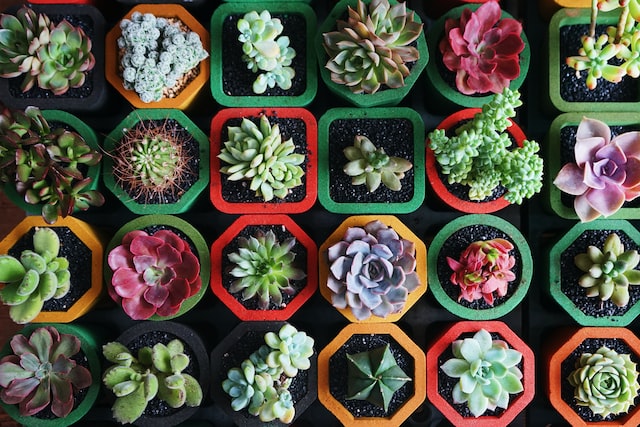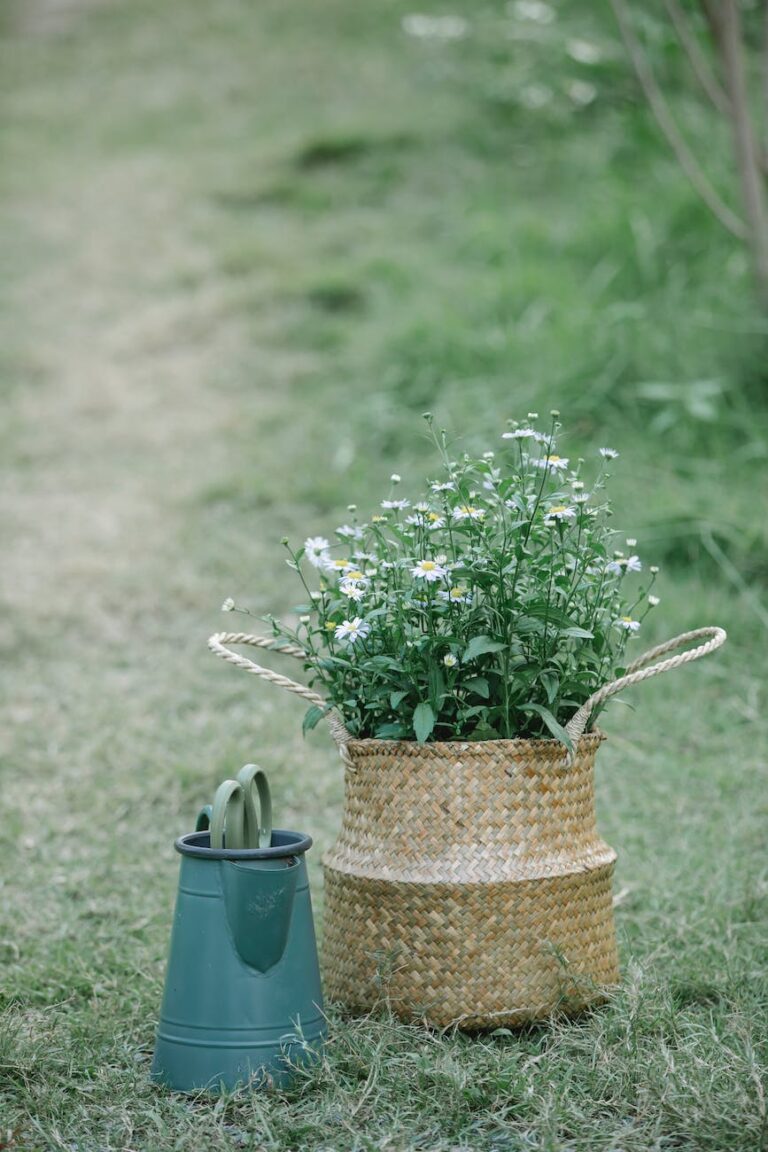30 Must-Have Succulents for Your Indoor or Outdoor Garden.
Succulents are a type of plant that are known for their ability to store water in their leaves, stems, or roots. This makes them a popular choice for gardeners and indoor plant enthusiasts, as they are relatively low maintenance and can survive long periods without water. There are many different types of succulents, each with its own unique appearance and growing habits.
- Aloe Vera: This is one of the most well-known succulents, and is prized for its medicinal properties as well as its attractive appearance. The fleshy leaves are often striped with white or green and the plant produces spikes of orange or yellow flowers.
- Jade Plant: Also known as the “money tree,” the jade plant is said to bring good luck and prosperity to its owner. It has shiny, plump leaves that are a rich green color and can grow into a small tree-like form.
- Echeveria: This is a large genus of succulents that come in a variety of shapes, sizes, and colors. Some of the most popular types have rosette-shaped leaves that come in shades of green, blue, and red.
- Christmas Cactus: As the name suggests, this succulent blooms around Christmas time, producing vibrant pink, red, or white flowers. Its fleshy leaves are flat and scalloped and it is typically grown as a hanging plant.
- Haworthia: This is a small, slow-growing succulent that is prized for its intricate patterns and textures. The leaves are often covered in white speckles or have a warty appearance.
- Cacti: There are many different species of cacti that are considered succulents, including the iconic saguaro cactus. These plants are known for their tough, spiky exterior and their ability to thrive in arid conditions.
- Sedum: This is a large genus of succulents that come in a variety of shapes and sizes. Some have small, fleshy leaves while others have larger leaves that are flat and scalloped. Many sedums produce yellow, pink, or orange flowers.
- Snake Plant: Also known as “mother-in-law’s tongue,” this succulent has tall, upright leaves that are striped with green and yellow. It is a tough plant that can survive in low light conditions and is often grown as a houseplant.
- Zebra Plant: This succulent is named for its striking leaves that are striped with white and green. It is a slow-growing plant that can be propagated by cutting a leaf and planting it in soil.
- String of Pearls: This unique succulent has small, round leaves that grow on long, trailing stems. It is often grown in hanging baskets or as a trailing plant in a container.
- Sempervivum: Also known as “hen and chicks,” this succulent forms a rosette of fleshy leaves and produces offsets that can be propagated and grown into new plants.
- Donkey’s Tail: This trailing succulent has long, fleshy leaves that resemble the tail of a donkey. It is often grown in hanging baskets or as a trailing plant in a container.
- Aeonium: This is a large genus of succulents that come in a variety of shapes and sizes. Some have rosette-shaped leaves that come in shades of green, red, and yellow, while others have tall, stem-like growths that produce clusters of flowers.
- Crassula Ovata:
- Also known as the “jade plant,” this succulent is prized for its attractive appearance and its symbolism of wealth and prosperity. It has fleshy leaves that are plump and rich green color and can grow into a small tree-like form.
- Kalanchoe: This is a genus of succulents that come in a variety of shapes, sizes, and colors. Some of the most popular species have rosette-shaped leaves that come in shades of green, red, and yellow, and produce spikes of bright flowers.
- Graptopetalum: This succulent is prized for its rosette-shaped leaves that come in shades of green and purple, and for its attractive flowers. It is a slow-growing plant that is often grown in containers or as a ground cover.
- Fenestraria: This unique succulent has fleshy leaves that are shaped like tiny windows and are covered in white, transparent tips. It produces small, yellow, or white flowers.
- Pachyveria: This is a genus of succulents that have plump, fleshy leaves and produce clusters of delicate flowers. Some popular species have blue-grey leaves, while others have leaves that are streaked with red or purple.
- Echinocereus: This is a genus of cacti that are known for their bright, showy flowers and spiny stems. Some popular species have red or yellow flowers, while others have flowers that are pink, purple, or white.
- Agave: This is a genus of succulents that are known for their tough, spiky leaves and their ability to thrive in arid conditions. Some popular species have large rosettes of blue-grey or green leaves, while others have leaves that are streaked with yellow or white.
- Hoya: This is a genus of succulents that are prized for their attractive leaves and their sweet-smelling flowers. Some popular species have thick, fleshy leaves that are green or variegated, while others have leaves that are covered in white or red hairs.
- Adromischus: This is a genus of succulents that have small, fleshy leaves and produce delicate flowers. Some popular species have leaves that are shaped like hearts or teardrops, while others have leaves that are streaked with red or yellow.
- Pilea Peperomioides: Also known as the “Chinese money plant,” this succulent is prized for its round, flat leaves that are a bright green color. It is often grown as a houseplant and is said to bring good luck and prosperity to its owner.
- Gasteria: This is a genus of succulents that have fleshy leaves that are often marked with white or green stripes. Some popular species have leaves that are shaped like a stomach, while others have leaves that are shaped like a tongue.
- Senecio: This is a large genus of succulents that come in a variety of shapes, sizes, and colors. Some popular species have rosette-shaped leaves that are covered in white or yellow hairs, while others have leaves that are shaped like a finger.
- Aptenia: This succulent has small, fleshy leaves that are a bright green color and produce delicate flowers. It is often grown as a ground cover or in containers.
- Lithops: Also known as “living stones,” this succulent has leaves that are shaped like pebbles and are often speckled with white or green. It is a slow-growing plant that is often grown in rock gardens or in containers.
- Faucaria: This succulent has thick, triangular leaves that are often marked with white or yellow teeth. It produces small, yellow or orange flowers.
- Crassula: This is a genus of succulents that come in a variety of shapes, sizes, and colors. Some popular species have rosette-shaped leaves that are a bright green color, while others have leaves that are shaped like a jade tree or a miniature pine tree.
- Zygocactus: Also known as the “Christmas cactus,” this succulent is prized for its showy, brightly colored flowers that bloom in the winter. It has flat, segmented leaves that are a green color and is often grown as a houseplant.
These are just a few of the most popular succulents. With so many varieties to choose from, it’s easy to see why succulents are one of the most popular types of plants for indoor and outdoor gardens. Whether you’re looking for a small, compact plant for your windowsill or a large, lush plant for your garden, there’s a succulent that’s just right for you.




The flowers have a very nice smell but if you have lovely pets around your home then they can mess up with the flowers and release a sticky matter. Even the plant leaves are sometimes toxic to furry animals. However, sometimes the immature plant offers white flowers. But mostly, the plants of 2-3 years are ready to take the stress and bloom.
Do you one thing? The snake plant flowers are pretty much unlikely to catch pests. Earlier, it was though that snake plants have only beautiful, flat leaves but then people discovered the white flowers. So, the flower appearance on the snake plants is mystery play. How long does the flowers last? Approximately for 14-30 days in the growing season.
Though these are low-maintenance plants there are some problems you might face while nurturing them inside the home. Like brown tips due to hot sun exposure, root rot while propagation, aphids, and other diseases.